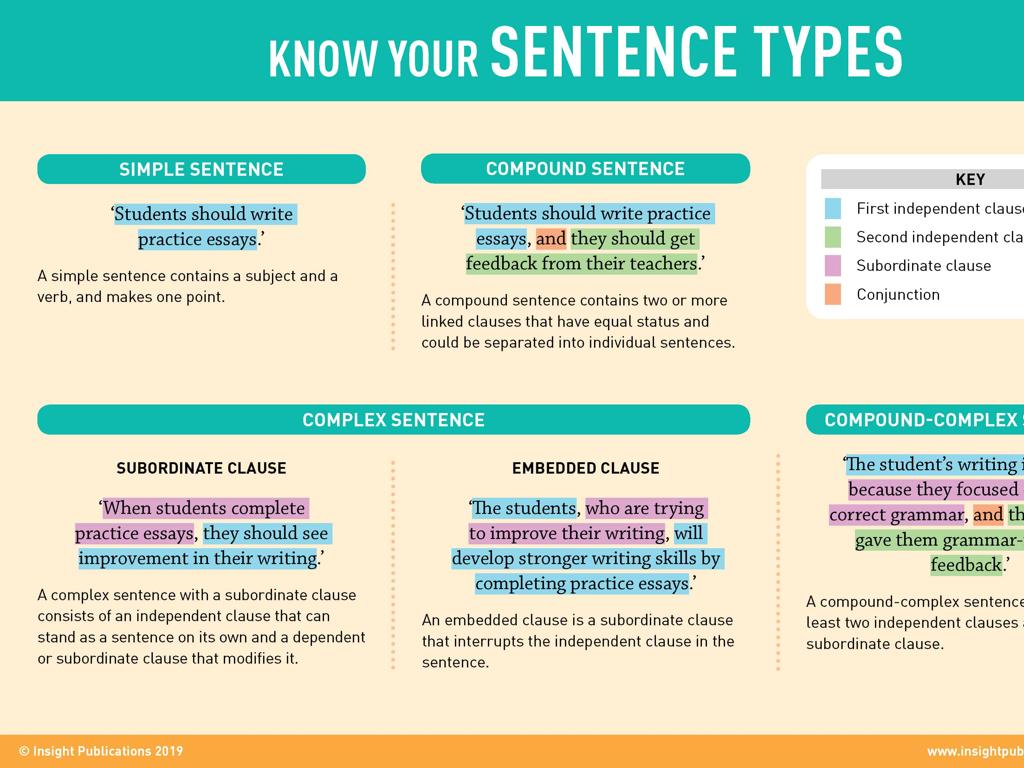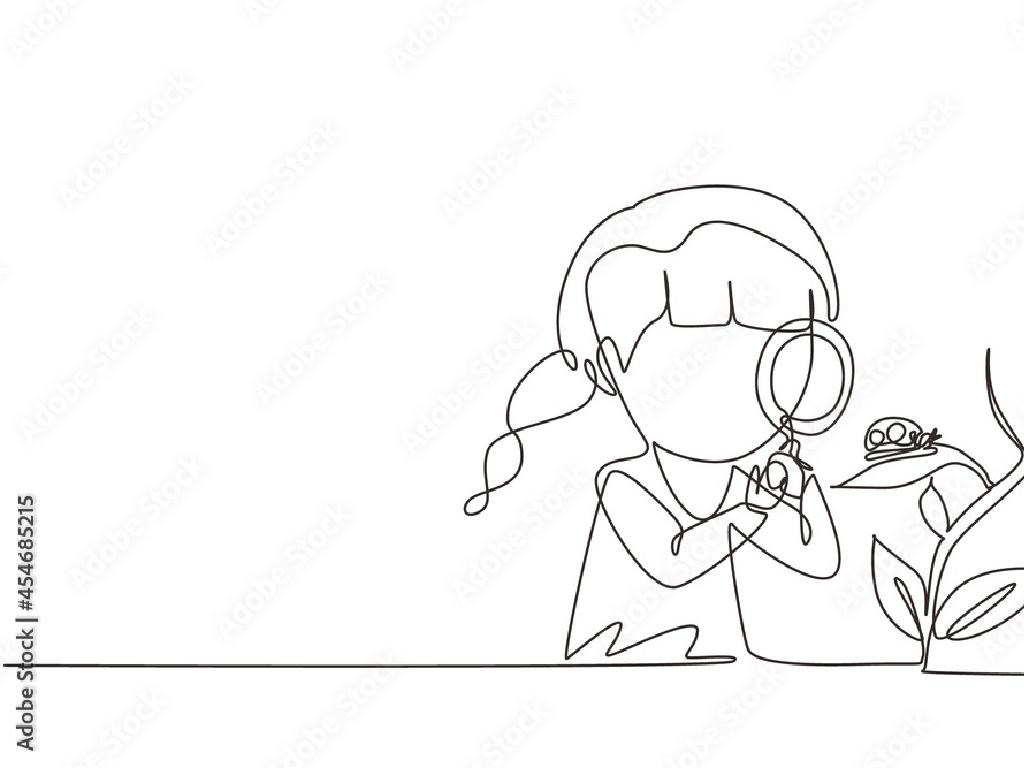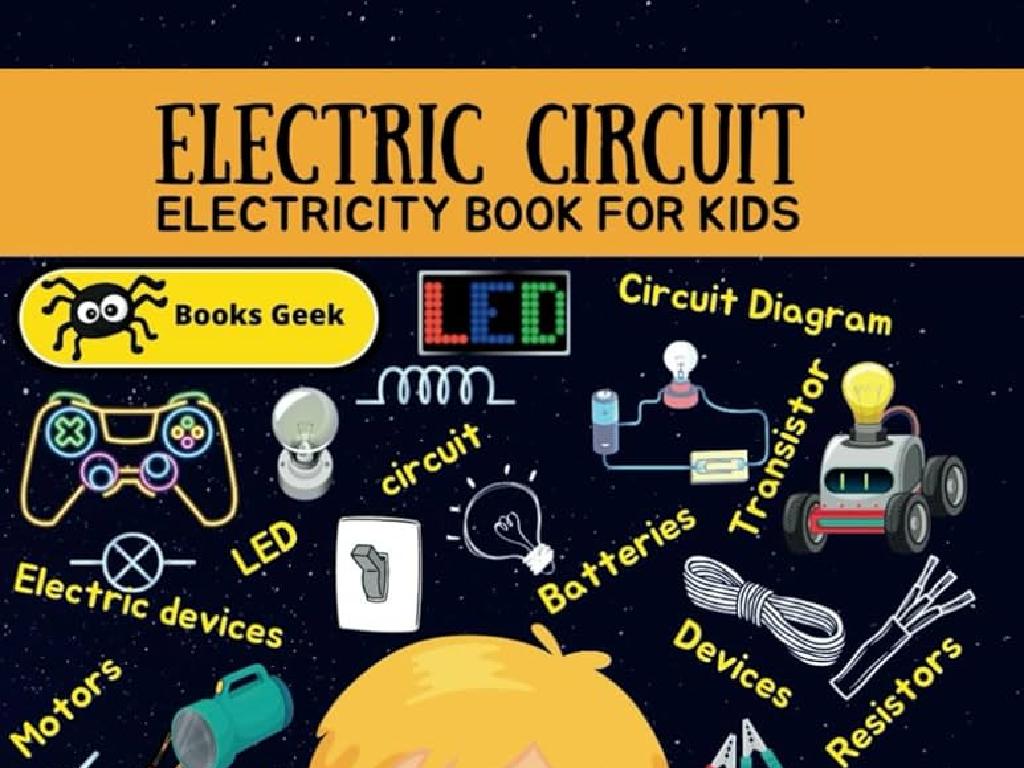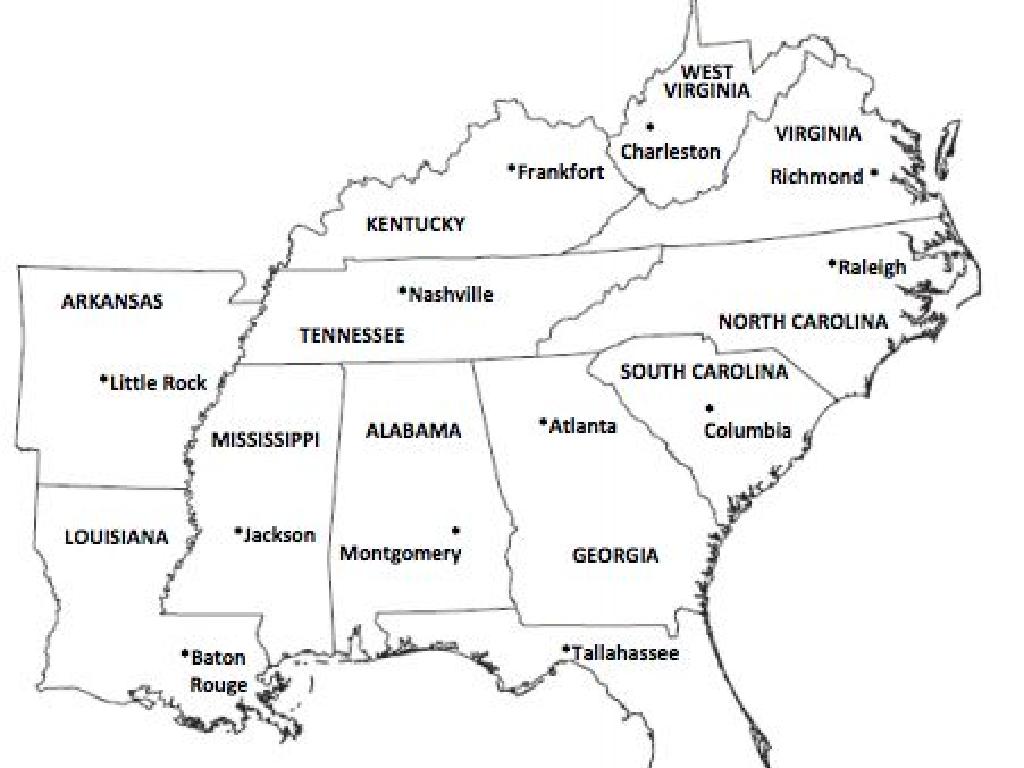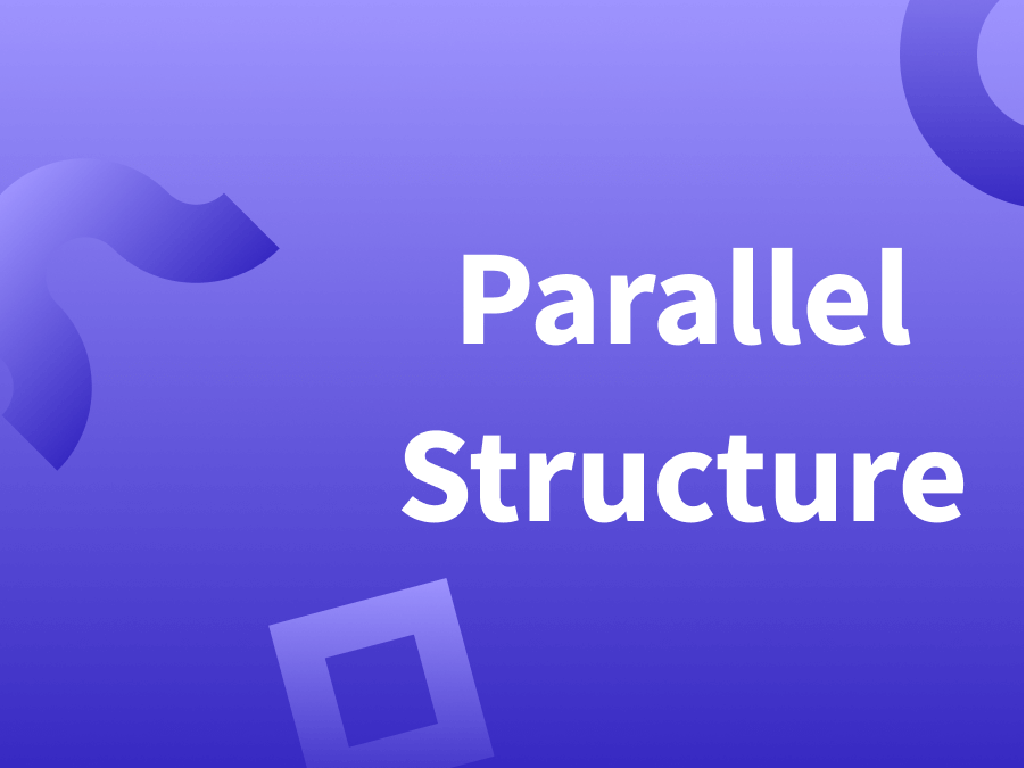Flat And Solid Shapes
Subject: Math
Grade: Kindergarten
Topic: Three-Dimensional Shapes
Please LOG IN to download the presentation. Access is available to registered users only.
View More Content
Welcome to Shapes: Exploring Flat & Solid Friends
– Greet our shape explorers
– Today’s adventure: Flat & Solid Shapes
– What shapes do we know?
– Think of shapes like circle, square, cube, sphere
– Shapes are everywhere!
– Look around to find shapes in the classroom
|
Begin the class with an enthusiastic greeting to capture the children’s attention. Introduce the concept of flat and solid shapes by explaining that shapes have different forms; some are flat like a piece of paper (2D) and others are solid like a ball (3D). Encourage the children to actively participate by asking them to name any shape they are familiar with. This will help assess their prior knowledge and make them feel involved in the learning process. Highlight that shapes are all around us and can be found in our everyday environment. This will set the stage for children to start observing and recognizing various shapes in real-life contexts.
Exploring Flat Shapes
– Flat shapes can be drawn
– Like pictures, flat shapes are flat and can fit on paper
– They have length and width
– Think of a flat shape as a piece of paper: it has a top and a bottom but is thin
– Flat shapes have no depth
– Examples: Circle, Square, Triangle
– A circle is round like a cookie, a square has four equal sides, and a triangle has three sides
|
This slide introduces Kindergarten students to the concept of flat shapes, which are two-dimensional. Emphasize that these shapes are like drawings or pictures that can be made on paper. They have length and width – which means they have a top and a bottom or sides that can be measured – but they do not have depth; they are not thick like a book or a box. Use everyday objects to illustrate examples of flat shapes, such as a clock (circle), a napkin (square), and a slice of pizza (triangle). Encourage the children to think of other objects that match these shapes to reinforce their understanding.
Let’s Draw Flat Shapes!
– We’ll draw flat shapes together
– Learn to draw a circle, square, triangle
– Circles are round like a cookie, squares have four equal sides, triangles have three sides
– Try drawing many shapes on your paper
– Share your shapes with the class
– Show your friends the shapes you’ve made
|
This slide introduces a drawing activity focused on flat shapes, which are two-dimensional. Start by demonstrating how to draw each shape: a circle (no corners), a square (four equal sides and corners), and a triangle (three sides and corners). Encourage the children to draw as many shapes as they can, fostering a fun and competitive environment. Provide them with enough paper and drawing materials. After the activity, create a sharing time where each child can display their artwork and identify the shapes they’ve drawn. This will help reinforce their understanding of flat shapes and how they differ from solid (three-dimensional) shapes.
Exploring Solid Shapes
– Solid shapes are 3D objects
– Length, width, and depth make up 3D shapes
– They have 3 dimensions
– Unlike flat shapes, they are not flat
– Solid shapes can stand alone
– They don’t need support to stay up
– Examples: Cube, Sphere, Cylinder
– Cube (dice), Sphere (ball), Cylinder (can)
|
This slide introduces kindergarteners to the concept of solid shapes, emphasizing their three-dimensional nature. Explain that unlike flat shapes, solid shapes have depth, making them 3D. They can be touched and held, unlike flat shapes which are only drawn on paper. Use tangible examples like a dice for a cube, a ball for a sphere, and a can for a cylinder to help students visualize and understand. Encourage the students to bring objects from home that represent these shapes for a show-and-tell activity, enhancing their learning through hands-on experience.
Exploring Solid Shapes
– Touch and hold solid shapes
– Feel faces, edges, and corners
– A face is a flat surface, an edge is where two faces meet, and a corner is where edges meet.
– Find shapes in the classroom
– Look around! Do you see a sphere, cube, or cylinder?
– Discuss shapes found
|
This slide is designed for a hands-on activity where students will explore various solid shapes by touch. Provide a collection of solid shapes like cubes, spheres, and cylinders for the children to handle. Guide them to feel the different features of these shapes, such as the flat faces of a cube, the round surface of a sphere, and the sharp corners of a pyramid. Encourage the students to look around the classroom and identify objects that match the shapes they’ve learned. This activity will help them understand the concept of three-dimensional shapes in a tangible way. After the exploration, have a discussion with the students about the shapes they found and where they see these shapes in their everyday life.
Shape Matching Game: Flat Friends Meet Solid Buddies!
– Match flat shapes to solids
– A square is a cube’s face
– Like a box’s side, that’s flat!
– A circle is a sphere’s face
– Like a ball’s surface, that’s round!
– Have fun finding matches!
|
This slide introduces a matching game to help Kindergarten students understand the relationship between flat and solid shapes. The game is designed to be interactive and fun, encouraging students to think about how shapes they see every day in two dimensions can relate to three-dimensional objects. For example, the flat surface of a square can be seen as one face of a cube, like a dice or a block. Similarly, a circle is like the flat face of a sphere, such as a beach ball or a globe. Teachers should prepare physical shape cutouts or images to facilitate this activity, allowing students to physically match flat shapes with their corresponding solid shapes. This tactile experience reinforces their learning and understanding of geometric concepts.
Shape Hunt Adventure
– Let’s go on a shape hunt!
– Find flat and solid shapes
– Look for circles, squares, and more
– Work with friends on the hunt
– Team up and help each other
– See how many shapes you discover
– Keep count of all the shapes you find
|
This slide introduces a fun and interactive class activity where students will search for various flat and solid shapes around the classroom. Encourage the children to explore and identify shapes such as circles, squares, triangles, rectangles (flat shapes), as well as cubes, spheres, and cylinders (solid shapes) in their environment. This activity helps reinforce their understanding of shapes in a practical context. Provide guidance on how to work cooperatively in small groups and remind them to respect the classroom space. After the hunt, gather the students to discuss their findings and share the different shapes they found. This will also be an opportunity to count the shapes together and practice their counting skills.
Show and Tell: Shape Hunt Recap
– Share your shape hunt finds
– Explain why it’s flat or solid
– Is it like a paper (flat) or a block (solid)?
– Discuss shape characteristics
– Look for edges, vertices, and faces
– Celebrate our shape detectives
|
This slide is for a class activity where students will present the shapes they found during their shape hunt. Encourage each child to explain why they believe their found object is either a flat or a solid shape, discussing its characteristics such as edges, vertices, and faces for solid shapes, or the lack thereof for flat shapes. Praise their efforts in identifying shapes in the real world, reinforcing their understanding of geometry in a fun and interactive way. Prepare to guide them gently if they are unsure and celebrate all their findings, emphasizing the importance of exploration and observation in learning.
Class Activity: Shape Creators
– Make solid shapes with clay
– Create a cube
A cube has 6 equal square faces
– Form a sphere
A sphere is a round ball-like shape
– Mold a cylinder
A cylinder has 2 circle bases and a curved side
|
This hands-on activity is designed to help Kindergarten students understand and remember three-dimensional shapes through tactile learning. Provide each student with a piece of clay and guide them through the process of creating a cube, sphere, and cylinder. Explain the properties of each shape as the students work on them. For example, a cube has six equal square faces, a sphere is perfectly round like a ball, and a cylinder has two circular bases connected by a curved surface. Encourage creativity and assist students as needed. Possible variations of the activity could include using playdough or modeling compound, creating different shapes like cones or pyramids, and painting or decorating the shapes after they dry.
Great Job Exploring Shapes!
– You learned about shapes today
– Shapes are all around us
– Shapes make up our world, like squares in windows
– Find shapes at home
– Can you spot a ball (sphere) or a box (cube)?
– Share your shape discoveries
– Tell us about the shapes you see at home tomorrow!
|
This slide is meant to conclude the lesson on flat and solid shapes, reinforcing the children’s learning and encouraging them to continue exploring shapes in their environment. Praise the students for their hard work during the lesson. Remind them that shapes are not just in the classroom but are a fundamental part of everything they see and interact with daily. Encourage them to be little detectives at home, looking for and identifying shapes. Ask them to be ready to share one or two shapes they find at home the next day, fostering excitement and anticipation for the next class. This activity will help reinforce their understanding of shapes and how they fit into the world around them.

